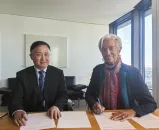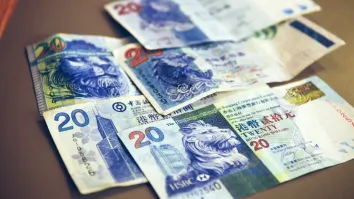
Non-residents hold CNY4.4 trillion worth of total RMB denominated assets
Up from CNY2.88 trillion in 2013.
The use of RMB in international trade and direct investment continued to rise with about 20% of China’s goods trade in 2014 denominated in RMB according to PBoC’s estimation.
According to a research note from OCBC Bank, meanwhile, as a result of further opening of China’s capital account, total RMB denominated assets held by non-residents has increased significantly to CNY4.4 trillion at the end of April 2015, up from CNY2.88 trillion in 2013.
In particular, the foreign ownership of equity and bond has increased to CNY644.4bn and CNY735.2 respectively from CNY344.8bn and CNY399bn at end of 2013 thanks to increasing CIBM and RQFII quota.
Meanwhile, the average CNH foreign exchange daily trading volume in key RMB centers including Hong Kong, Singapore and London etc has exceeded US$230bn, much higher than the daily CNY foreign exchange trading volume of US$55bn in China’s onshore foreign exchange market.
Looking ahead, the development of a new RMB cross border payment system and efforts to make RMB a reserve currency will be two key projects in PBoC’s pipelines.
Here's more from OCBC Bank:
CIPS is ready - The PBoC will launch the long-awaited first phase of China International Payment System (CIPS) by end of 2015 to improve efficiency of RMB cross border settlement. The new CIPS system will lower the language and time barrier faced by current China National Advanced Payment System (CNAPS), which was mainly designed for local use.
The first phase of CIPS is expected to operate from 9am to 8pm, meeting the settlement demand from Europe as well as Asia. The increase in efficiency and reduction of costs for settling Yuan is likely to further boost the usage of RMB in the global stage.
Making RMB a global reserve currency amid further capital account liberalization - The latest announcement to allow offshore RMB clearing banks and participating banks to access to China’s onshore repo market in early June marks another important step for China’s capital account liberalization.
Nevertheless, it is just the start of liberalization. Three more capital account liberalizations are in the pipeline this year including 1) QDII2 program to allow onshore investors to invest in the offshore market, 2) Shenzhen Hong Kong stock connect, similar to Shanghai Hong Kong connect and 3) allow non-residents to issue financial products in the onshore market (excluding derivative).
Meanwhile, China’s central bank openly highlights in the report that China will enhance RMB’s role as the global reserve currency. This will also include push forward RMB to be included in the SDR basket.
According to PBoC, foreign central banks and monetary authority held about CNY666.7bn RMB denominated bond, equity and deposit in China’s domestic market as of April 2015, only accounting for close to 1% of total global reserve based on our estimation.
In order to boost RMB’s role as global reserve currency, the PBoC is likely to remove the investment quota for foreign central bank and monetary authority and allow them to invest in China’s onshore interbank market freely.


















 Advertise
Advertise









